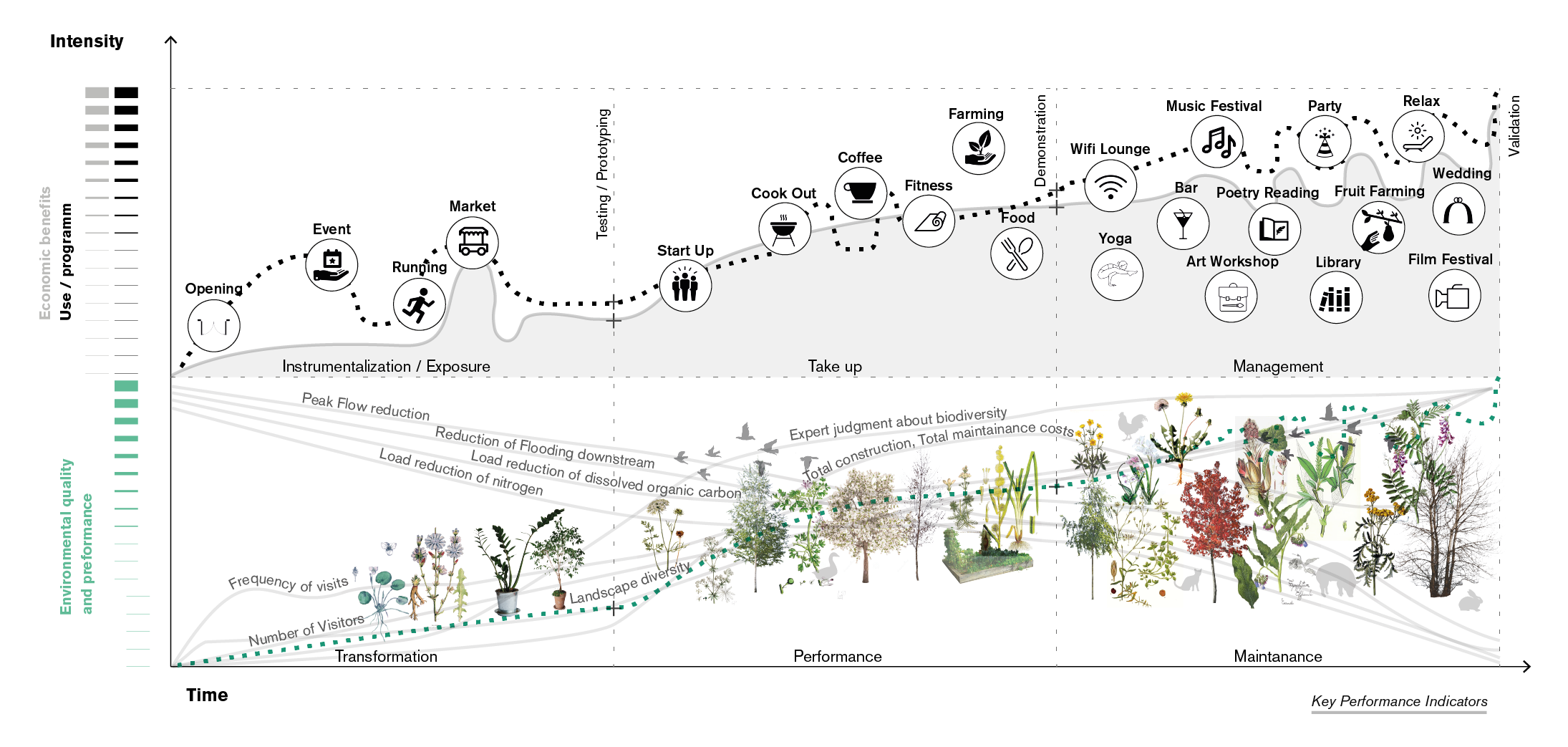5.2.2 Lesson learned
Course subject(s)
Module 5. Implementation

In 1947 a temporary location was found for New York City’s waste storage along the western coast of Staten Island. As rates of consumption and the city’s population kept on rising exponentially in the years after the second world war the site soon became the principal landfill for New York City. 50 years later, what was left of the 9 km2 wetland was 9 km2 of hilly landscape. However, these hills, all with a height of about 60 meters, are all filled with trash, making it the biggest landfill in the world. Some even refer to it as the biggest man-made structure in the world.
The site of the landfill once was a salt march and home to tidal wetlands, forests, and wetlands which had a cleaning effect on water passing through and supported a great ecosystem of animals and vegetation. This now was covered in waste and populated by stray dogs and rats. In answer to the negative impact on local communities, the landfill was closed in 2008 and the Department of City Planning along with Department of State’s Division of Coastal Resources initiated the plan to regenerate the decommissioned landfill into a park reclaiming the wetlands and facilitating natural habitats for wildlife, recreation, scenic looks, sports and nature education with a design by James Corner Field Operations
These goals, however, will not be accomplished right after the start of the regeneration. Below you find a timeline which visualises the 30-year master plan to guide you through the evolution of the wasteland towards a park. Initially the existing site is a landfill without public access or amenity. A few years after closure of the landfill and stopping the dumping of waste, the first parts of the site can be reclaimed as public landscapes. As the negative image and conditions of the landfill decrease, the landscape diversity but also visitors increase. To boost the transformation and the use of the growing public space an event like a festival, market or sport event can be organized as an incentive.
In the case of a large scale park like Fresh Kills the implementation of park-roads increased the connectivity for users of the park but also accelerated the reclamation of the site as public parkland. In this way the transformation is facilitated and the exposure is stimulated. At a certain point, recreational uses like restaurants, cultural facilities and sport amenities can activate the site on a larger scale and the uptake of the park reaches new heights.
The same counts for the performance. The decomposing waste in the soil allows for the collection of natural gas capable of heating approximately twenty thousand homes. After the devastations of hurricane Sandy in 2012, Fresh Kills has proven itself by absorbing much of the storm surge and redistributing the accumulating water, buffering the impact on neighboring residential areas. At such a moment the construction costs start to decrease and evolve into the effort of collective maintenance which outweighs the valuation and natural functioning of the park which are in full bloom.


Nature Based Metropolitan Solutions by TU Delft OpenCourseWare is licensed under a Creative Commons Attribution-NonCommercial-ShareAlike 4.0 International License.
Based on a work at https://online-learning.tudelft.nl/courses/nature-based-metropolitan-solutions/.



